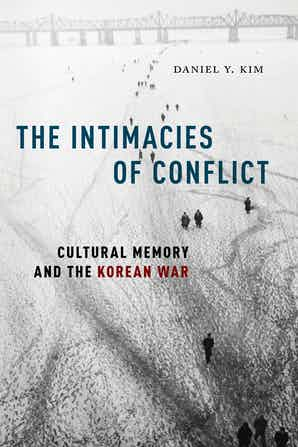Review: Intimacies of Conflict: Cultural Memory and the Korean War by Daniel Y. Kim
- schiffnerhs
- Oct 26, 2021
- 3 min read
Daniel Y. Kim. Intimacies of Conflict: Cultural Memory and the Korean War. New York: NYU Press, 2020.
Review by Katherine Allocco, Western Connecticut State University
Daniel Kim’s thorough and thoughtful new book, Intimacies of Conflict, argues that the Korean War, the so-called “forgotten war”, exerted a widespread influence on the way that Americans understood, discussed and explored race in society and popular culture. Kim analyzes numerous novels and films drawing from many disciplines and methodologies as he carefully identifies patterns of racial stereotypes and shifting images from both the years during the war and from subsequent decades while explaining their historical and cultural significance. Although the Korean War may not have generated as dramatic or identifiable a body of work as World War II or Viet Nam, Kim believes that its influence was no less great as cultural works about Korea generated from the 1950s onwards reveal the difficult conflicts both home and abroad that shaped America’s racial landscape.

Kim organizes his monograph into two parts. Part I: “The ‘Forgotten War’ Before It Was Forgotten” delves deeply into a large collection of film and writing from the 1950s and early 1960s beginning with the very first Hollywood movie about the Korean War: Samuel Fuller’s The Steel Helmut (1951). Kim notes how Fuller’s realistic and gritty approach to his subject featured several characters of multiple races – both soldiers and civilians- who escaped comfortable stereotyping and challenged movie-goers’ understanding of both Asian and Black men and the ways that they could bond with each other and with white soldiers. For Kim, this film provides the perfect starting point for exemplifying his notion of the intimacy of conflict, a theme that he sees explored in many films and written works from the 1950s and 1960s including some of the most obscure films as well as more popular Hollywood films such as Pork Chop Hill and One Minute to Zero.
Part II: “Assemblages of Memory” deftly exhibits his analysis of a multiracial and transnational approach to cultural memory as explored through later generations of filmmakers and novelists whose understanding of the Korean War connects with other imperial impulses and personal experiences. In this way, Kim expands the definition and impact of interracial intimacies that later creators imagine shaped the relationships between servicemen, humanitarian aid workers and Korean civilians. His research includes films and books by a diverse group of American and Korean artists offering a rich myriad of perspectives and voices. These include Jayne Anne Phillips, Rolando Hinojosa, Toni Morrison, Susan Choi, Chang-are Lee and Hwang Sok-yong. By analyzing the ways that popular culture vehicles depict military violence, personal relationships and humanitarianism, Kim problematizes the racial politics of Korean War narratives exposing the richness of fictional discourse that directly confronted race in a sophisticated and productive way that truly influenced national perceptions even if the American public was not always aware of this.
Throughout the monograph, the author demonstrates a thorough and clear mastery of the critical theory and historiography of the topic making this an excellent book to assign in any upper-level or graduate course. Intimacies of Conflict would work beautifully in any US History, American Studies, Asian Studies, African American Studies, Film as History or general cinema studies courses.
Intimacies of Conflict is the winner of the 2020 Peter C Rollins Book Prize.





Comments